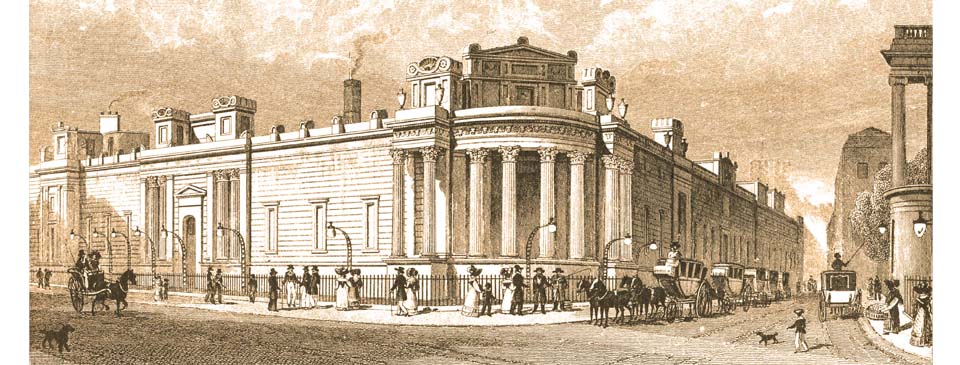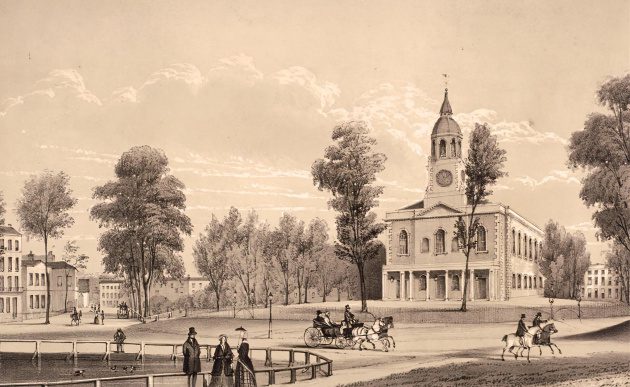In brief – London in the Age of Improvement

The new Bank of England. It had originally opened on the current site in Threadneedle Street in 1734, at what was then the house and garden of its first governor, Sir John Houblon. It was rebuilt between 1788 and 1833 according to the design of Sir John Soane, shown in this picture by Thomas H. Shepherd from 1827. Soane’s building was largely replaced in the 1920s.
In February 1836 the London & Greenwich Railway Company opened the capital’s first passenger railway, between Bermondsey and Deptford. It was an immediate success: in its first week it carried seven hundred passengers per day and by 1844 was carrying two million people per year. Later that year they extended the line and built a new terminus beside St. Thomas’s hospital on the south side of London Bridge. New lines were opened to other destinations throughout south London.
In 1802 a factory in Soho began producing coal gas and this was first demonstrated for use in street lighting at the Prince Regent’s Carlton House at Pall Mall. Several years later the Gas Light & Coke Company started lighting London’s streets and other companies followed in different areas of London. It was a slow process and took several decades before gas-lighting was widespread.
The Scottish engineer John Loudon McAdam first introduced his new method of road-surfacing in Bristol in 1816 and in the following decade ‘macadamization’ was being used to cover London’s streets. In the 1830s wooden paving was laid along many of the main streets, including Oxford Street and the Strand.
In 1805 the Bow Street Horse Patrol was formed and was successful in bringing highway robbery to an end around London. A Day Patrol was formed in 1822. The Ratcliffe Highway murders of 1811 showed up the many inadequacies of the policing structure and in 1828 the Home Secretary, Sir Robert Peel, set up a committee to investigate crime and policing in London. Following its findings, the Police Bill led to the setting up of an organised police force. The first thousand Metropolitan Police officers began their patrols in September 1829, with an office at Whitehall Place, Great Scotland Yard.
A new type of prison, similar to those that continue to exist in modern times was commissioned in 1813 on the riverbank to the west of Westminster. Millbank Penitentiary was built according to the design of social reformer Jeremy Bentham.
The long war with France, which had begun in 1793, finally came to an end in June 1815 when the allied forces (the British army being commanded by the Duke of Wellington) defeated Napoleon at the battle of Waterloo. Wellington returned to London, where he purchased Apsley House at Hyde Park and continued his career in politics, becoming Prime Minister in 1828.
There was civil unrest in London in 1816. The economy was in the doldrums and after victory in the Napoleonic War soldiers were being dismissed without the possibility of finding work. The corn laws were keeping the price of bread unnecessarily high and in March people rioted, smashing the windows of politicians.


